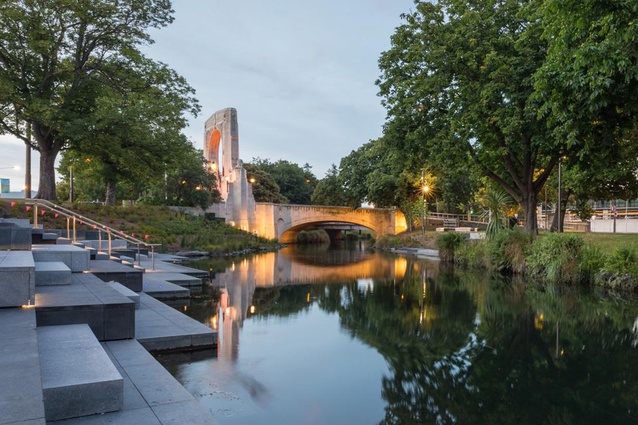Connecting city and landscape
Mike Thomas, landscape architect at Jasmax, discusses New Zealand's landscapes and the role of landscape architecture in city making.
The phrase “get back to nature” has always struck me as being particularly curious. For when, and perhaps more importantly, where, did we leave it? The answer it appears, judging solely by traffic jams on Auckland’s public holiday weekends, lies in the beaches of the Coromandel Peninsula and Northland.
New Zealand is blessed with some of the most beautiful scenery in the world for sure, but can that really explain why so many of us, given the smallest window of free time, choose to escape our cities? Is it only the pull of the great outdoors? Or are we perhaps being given a bit of a push from cities that have largely turned their back on the unique landscapes that gave rise to them?
Auckland’s relationship with the Waitematā Harbour seems woefully underutilised and Hamilton has almost totally isolated itself from the Waikato River, to name a few examples amongst many.
To understand how we got here, we need to re-examine the way colonial urban planning laid out our cities, being located strategically around transportation and natural resources such as the Waitematā and Wellington harbours and the Avon and Waikato rivers.
The historical arrangement of infrastructure to move goods and people out from these resources, through the city and to the regions still exist in our streetscape networks.
Similarly, valued natural landmarks, public reserves and view shafts persist. As it’s typically easier to quantify the business case for a building or road than a landscape, funding tends to follow an architecture + landscape methodology.
In this sense, much of our practice has moved from placing buildings and infrastructure into our natural landscapes, to placing pieces of – often unrelated – landscape around the edges, creating a brand new slice of New Zealand within the boundary lines.

Recently we have seen a shift where large scale initiatives such as public transportation projects and the Christchurch rebuild have stimulated the reinvention of our public realm; initiating a focus on the landscape at large and refreshing its influence in our urban centres. Projects on the table include Auckland’s Victoria Street Linear Park, the new light rail project, CRL and Quay Street.
Christchurch City Council’s award-winning Share an Idea emphatically confirmed that people wanted a greener, more vibrant and more accessible city centre. By starting with a focus on the urban fabric of the city, landscape architects, urban designers, architects, mana whenua and engineers worked side by side to establish a new more compact city form in the 100 Day Blueprint.
Through projects like the Ōtākaro/Avon River Park, An Accessible City and South Frame, the city is re-establishing its relationship with the river though greater connectivity and cultural overlay; streets, lanes and plazas will be more walkable, multi-modal, greener with hundreds more street trees and thousands of square metres of rain gardens that will treat storm water before mixing with the Ōtākaro and ground water systems.
Christchurch’s new public realm is being designed in response to its natural landscape, shared cultural heritage and the wants and needs of its citizens. New trees, plantings, pavements and structures play their part in the composition of the city alongside waterways, buildings and roads.
From 2001 to 2005 I was fortunate enough to lead the design of several large city making projects in China. Here, landscape architects and urban designers work side by side to establish the potential of the land through natural systems, cultural footprints and other realities of the site to better understand where buildings and infrastructure should be placed and what arrangements will enable all systems and human connections to flourish within the structure of the city.
Under this model, cities occupy landscapes. A multi-disciplinary approach starting from the ground up seems to have greater potential to deliver cities imbued with context and better access to nature, which is what the people of Christchurch said they wanted.
While we may not always get the clean slate opportunities of rebuilding Christchurch or designing pieces of cities in China, I think it’s important to approach each project with the same holistic mind-set.
By considering smaller individual projects within broader natural landscape systems, we can invite nature back into our cities and, just maybe, lessen the number of traffic jams in the family station wagon with two carsick kids.











